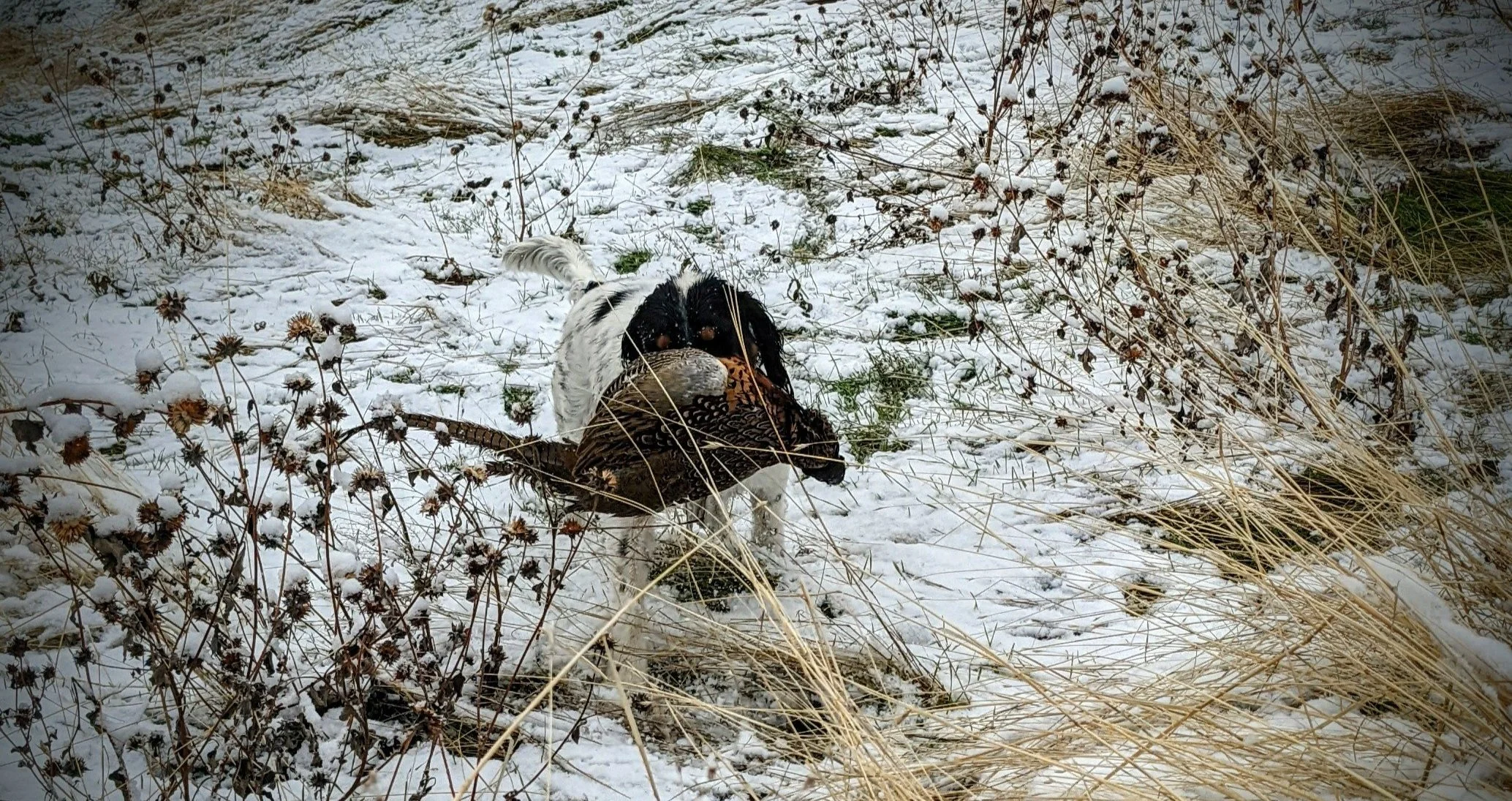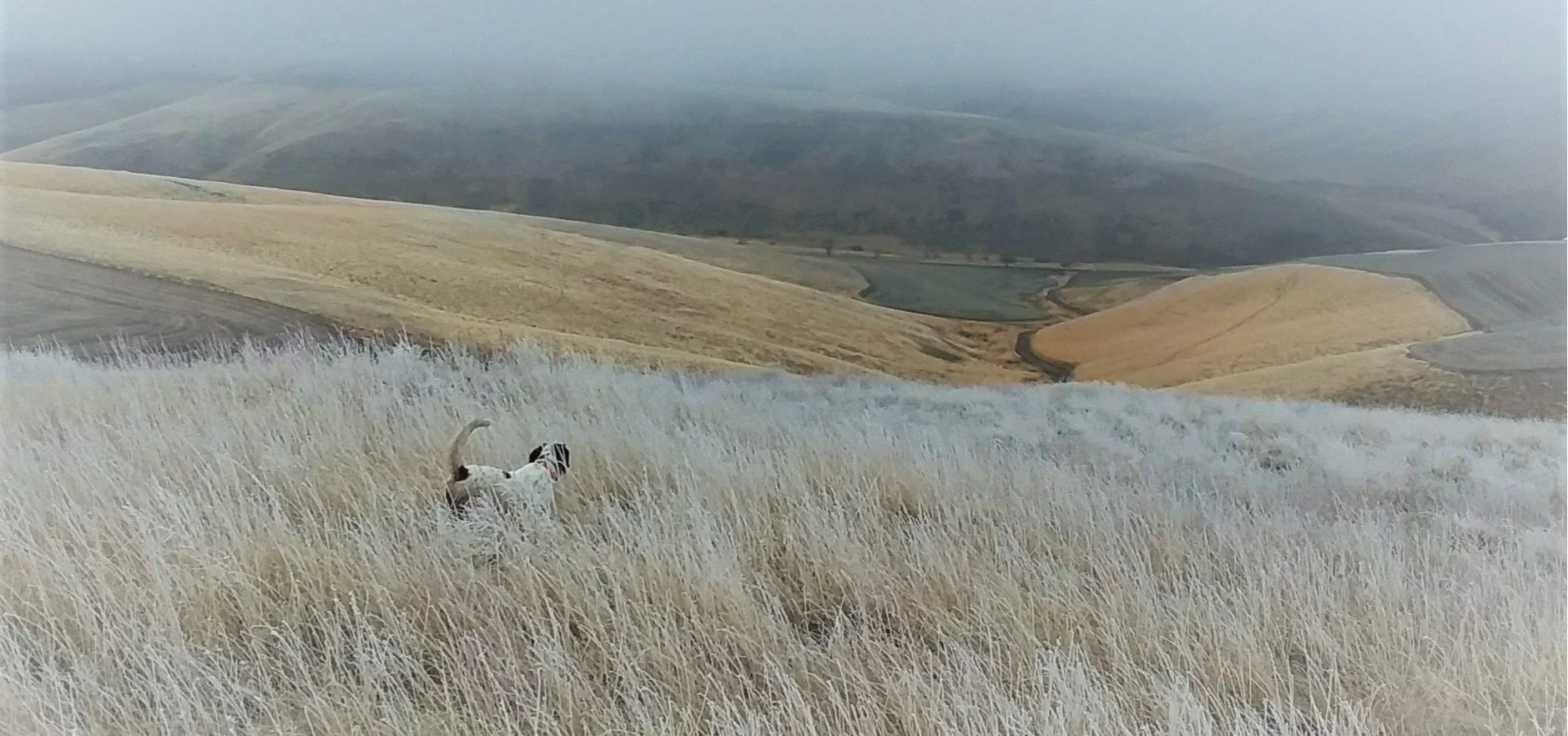The Expanded Season
Thick, wet, cover may be tough on dogs but it often holds pheasants - tight.
Some of us are old enough to remember back when most hunting seasons, in the northern reaches, ended with the coming of a new year. For several reasons, many states have abandoned the calendar in favor of extended opportunities. Though a boon to upland bird chasers, in the northern tier states, going deeper into winter’s realm presents a new set of circumstances.
Historically, the conditions of winter, cold and snow, were self-regulating aspects of January hunting traffic. Only a total fanatic would dare to hazard unpatrolled back roads to dodge highway closures - just to reach favorite pheasant grounds. (I can’t imagine who would do such a thing?!)
Yes, winters are generally warmer but, before donning your beach wear, know that “warmer” doesn’t mean the care-free days of fall. Consistent and predictable weather patterns have given-way to a number of odd anomalies.
Snow was generally deeper some decades ago. On the roads, snow is preferrable to ice and, in the field, deep snow determined where the birds would hole-up. That tended to keep the search to a minimum and limited our exposure to the elements. More often, on the fringe of freezing, inversions and rapid weather fronts transforms rain into layers of ice and wet roads into hockey rinks by nightfall.
Perhaps the amount of snow is not the issue it once was but the snow itself can be. A layer of melting snow particles freezes together into a layer of larger ice crystals. The crystalline structure acts like rough sandpaper, wearing on the pads or the more vulnerable skin on paws. Layered like a crust, snow of passable depth cuts at the front of the legs of canines as they break through and forge ahead. Like ice-breakers, a hunter is reduced to a high-stepping trudge; expending energy and producing a great deal of unwanted perspiration. Indeed, moisture can be the far greater danger.
Near-freezing, wet & windy, conditions can cool body temperatures dramatically. By adding physical exertion to the equation, core temperatures can drop below the body’s ability to maintain a normal range of temperature. The condition known as hypothermia can be experienced by humans and dogs. Racing through slushy snow, wet vegetation, and icy creek crossings, our canines can stop shivering, become lethargic, and confused. What I call nesting, pawing at the ground and curling to rest, can be another outward warning of onset canine hypothermia.
Hunting hours in cold and wet conditions, these “nesting” setters are done.
Rather than panting like dogs to cool body temperatures, humans are designed to use the broader cooling effects of evaporation. Physical exertion not only burns up the fuel needed to keep the body heated, it also causes sweat glands to dump loads of perspiration. Trapped inside layers of clothes, this moisture - combined with cooler external elements – can create a temperature deficient in humans, as well. Being aware of the symptoms, it’s up to the human team leader to keep close tabs on the group.
Bird action will help keep dog and hunter going on cold days.
These conditions can also produce a hypoglycemic state where the body’s blood sugar levels dip too low to maintain the heat and energy for warmth and the ability to exercise. Like hypothermia, the dog will appear confused and slow to respond. Take a break with one of several products formulated for dogs showing these symptoms. Better yet, BEFORE the symptoms appear.
There are several “home remedies”, such as honey or corn syrup added to water or granola bars of honey and oats, will serve the purpose. Since you and your dog can utilize the latter, it will cut-back on the number of items in your vest. Make certain to add plenty of water to the break as well. Oh, and keeping the water inside your vest, closer to your body, that should keep the water just a little warmer and reduce chilling the body from the inside when you drink. Many hunting vests allow for water bladders that are excellent for this purpose.
Cool temps and exurtion can place metabolisms in a deficit.
Late December and into January, though the days may be bright, the temperatures drop quicker than the setting sun. Clear days turn to clear nights that can often mean sub-freezing/zero temps. Exhausted and damp, long treks or lost dogs can be fatal. Concerned dog owners may use various canine vest-like coverings to help Fido maintain sufficient warmth for active daytime work. Still not completely finished, young dogs may require the use of check cords. This additional gear may cause very dangerous situations.
Temps drop quickly as the sun makes an early departure on mid-winter days.
Free use of check cords in forests, brush-filled draws and coulees requires a very keen awareness as to the wanderings of upland dogs. The horror of a dog, thus restrained, not returning to its call-back whistle would be devastating. Tangled within thick cover like Ahab to his white whale, the young dog could suffer unspeakably. Loose hanging canine vests can create similar death-snarls – especially for smaller bodied dogs in heavy cover. These accessories on dogs that tend to range far and wide, may require the use of tracking collars.
A while back, I wrote an article on the various critters that upland hunters with dogs should be aware of in their jaunts out west. Into the depths of January there's a critter worth emphasizing - the coyote. January is the middle of denning season; the most aggressive period in the coyotes’ annual cycle of life. The coyote is an incredible canid with the wits required to foil every attempt to eradicate it. I, for one, am glad that our dogs are not nearly as divisive. Well, most aren’t, anyway!
During the winter months, many critters, such as rattlesnakes, are tucked safely away someplace hibernating. However, most of the mammals that can cause us problems are wide awake. During this time of year is when they wear the thickest winter coats and are most prized by trappers. Be sure you know how these mechanisms work and keep the dogs in close if snares are a possibility.
A long hike from the vehicle means a long hike back; be aware of changing weather conditions and the coming of nightfall. Keeping the dog at heel will preserve its energy for when it’s time to hunt.
This brings us to injuries in the extremes of winter outings. Slippery footing on uneven ground, wrapped up like the movie character, Randy, in “A Christmas Story”, can transform an athletic figure into a bumbling clown. Distanced from the vehicle, a hidden badger hole or a misplaced step - causing a sprain or broken limb - can be disastrous. The pain, of course, but the return trip to the vehicle will take time and increase your exposure to the elements. It is a good idea to have an adequately supplied first aid kit – especially during winter excursions into vast and varied terrain.
Frosty winter point.
KEY INFORMATION:
Stay Dry and Mobile: To prevent chilling dampness and clumsy movement that can cause injury, dress in layers; keep clothing light and as breathable as possible.
Keep Water Warm: Water inside vest (example: water bladders) will quench thirst without overly cooling internal body temps on very cold days.
Hypothermia: Watch for signs (meandering steps and indecision - dogs not shivering and attempts to “nest”) in you and your dog that cold and wet conditions are affecting the body’s ability to maintain temps sufficiently.
Exercise-Induced Hypoglycemia: Can happen in any environmental conditions during high-levels of exercise, early signs are lethargy or fatigue, followed by loss of appetite, lack of coordination, and vomiting.
Weather: Know the forecast as well as pay attention to the current conditions where you’re hunting and the road home. In many regions, due to elevation and other variables, weather can be unpredictable.
Know Your Limits: Physical exertion and cold temperatures can hinder muscular function; causing missteps that lead to injury.
The Drive Home: Fog lights, snow tires, and four-wheel-drive don’t make up for the lack of winter weather driving experience. Make an honest assessment and get home safe.
After a day of battling harsh weather conditions, the combined physical exertion can numb the mind. Dogs and gear appropriately stowed away, a soft seat and warm cab sure feels nice. Maybe, too, nice!
It’s a good idea to have a thermos of coffee waiting. Soup or other warm liquids will warm your insides but may make you drowsy. The conditions may have changed a great deal in the hours spent afield, take a minute to consider what the weather has been doing during the course of the day. Was there precip – what kind? Might there be ice on the roads? Assess the drive home while letting the caffeine do its job.
The final action that will get you home is an honest assessment of you and your vehicle’s abilities to handle road conditions. Recently mobile Americans have left the relative warmth of coastal and southern climes to converge in regions more temperate. An annual winter weekend on the slopes or a four-wheel-drive vehicle does not qualify someone as a winter-worthy driver.
If that sounds like a close description, keep a watchful eye on weather forecasts BEFORE you set out for your adventure. You may be surprised how different the world looks and feels after a cast of new snow and ice. Choose to stay within reasonable range of your vehicle – your vehicle in reasonable range of pavement - in case you’re caught in advancingly harsher conditions. In a season or two, you will acclimate to winter conditions. Live to see the day.
Just beginning to snow, now is the time to begin considering its effect on your dog and the drive home. After, I flush this rooster, of course!
Yes, upland bird seasons have expanded deeper into the winter months. Creating greater opportunity along with more diverse sets of circumstances. Recognize the possibilities, take an honest assessment, and have a plan of action. For, reacting may mean you’re already too late.
So, get out there and - safely - enjoy your dog.








